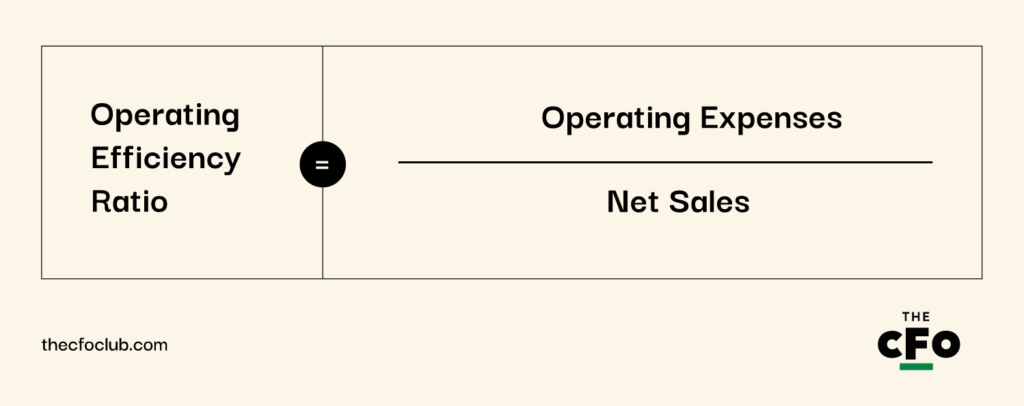Defining Operational Efficiency: Operational efficiency is optimizing resource usage to deliver high-quality products or services cost-effectively.
Efficiency vs. Productivity Battle: While related, productivity measures output per input, whereas operational efficiency focuses on optimal usage of existing resources, including people, materials, and time.
Audit Your Resources: Start by reviewing and documenting all resource usage in your company. Prioritize high-cost areas and reallocate resources as needed to eliminate waste and enhance efficiency.
Embrace Process Documentation: Review and document all business processes to maintain consistency and efficiency. Toyota's 'kaizen' approach can inspire continuous improvements at all organizational levels, simplifying training and onboarding.
When Mark Zuckerberg called 2025 the ‘year of efficiency’ for Meta, it stamped a label on what many businesses had already been planning and implementing. By looking to improve operational efficiency, organizations can reduce costs, increase profitability, and enhance productivity.
What Is Operational Efficiency?
Operational efficiency is the ability of an organization to deliver products or services in the most cost-effective way possible, while still ensuring high quality. Improving operational efficiency involves:
- Optimizing resource usage
- Reducing waste
- Simplifying processes
To use the phrase we’ve all heard, it’s doing more, with less. Well, kinda.
Operational efficiency is about more than just cutting costs. It's the process of using the available resources in the most strategic way, to produce the highest quality output. This means balancing efficiency with effectiveness, ensuring that every action taken contributes to the overall goals of the organization.
Technology is often at the heart of operational efficiency, with software solutions like enterprise resource planning (ERP) platforms specifically designed to improve organizational efficiency.
If you’re intrigued by the idea of an ERP system, these systems are the best place to start. Our team has reviewed what’s on the market, with these rising to the top.
Operational Efficiency vs. Productivity
While operational efficiency and productivity are related, they’re not the same. Productivity measures the output produced relative to the input used, whereas operational efficiency focuses on how well an organization uses its resources to achieve that productivity.
Operational efficiency looks at reducing waste and improving processes to maximize the output from the same amount of input.
For example, a highly productive worker who produces many units per hour might still be inefficient if they use too many materials, or if their work has quality control issues. Operational efficiency considers the broader picture, aiming for optimal use of all resources, including time, materials, and labor.
Steps To Improve Operational Efficiency
Here are some specific steps you can take to improve operational efficiency. It’s worth noting that these are general steps that will apply to most organizations but, of course, consider the nuances involved in your business.
1. Audit and Review Current Use of Resources
To begin the process, you need to review and document all the current uses of resources within the company. This should encompass everything from labor to materials to plant and equipment. The different ERP components can be useful here, categorizing resource use between business units.
To make this process as efficient as possible, you should prioritize the highest cost categories within the organization.
From there, you can ensure that these resources are being used as effectively as possible. This would involve reallocating resources to where they’re needed most, ensuring they aren’t wasted. For example, using lean manufacturing techniques can help identify and eliminate waste in production processes.
2. Review and Document Processes
The next step is to review the processes that are being used in all areas of the business.
Toyota famously employs a continuous improvement process known as ‘kaizen’, which translates to ‘good change’ in English. This culture empowers staff at all levels to seek improvements to the way they do their role, resulting in large-scale operational improvements.
By documenting processes, you can help maintain operational consistency and efficiency even whilst going through staff turnover and expansion, as you’re simplifying training and onboarding.
This process is also the first step toward ensuring ERP readiness in your organization.
3. Automate Processes
What’s better than making processes more efficient? Eliminating them altogether. To that end, technology can be a major benefit to improving operational efficiency, as automation can streamline repetitive and time-consuming tasks like data entry.
This not only speeds up processes but also reduces the opportunities for human error. Automation can be applied in various areas, from manufacturing to customer service, freeing up human resources for more complex tasks.
4. Improve Cross-Team Collaboration
Better communication leads to fewer errors, an enhanced customer experience, and more opportunities for continuous improvement.
Encouraging collaboration between different teams is the best way to improve communication and coordination. It leads to more efficient problem-solving and process improvements. Tools such as project management software and regular cross-functional meetings can be useful in facilitating better collaboration… also, ERP systems, by design, help with collaboration. I’m sorry, I had to say it.
5. Make Data More Accessible
Data is the lifeblood of modern businesses. Ensuring that data is easily accessible to those who need it can allow for better decision-making and quicker responses to issues. To make this a reality, you can consider implementing data management systems that provide real-time access to key information.
There are many software solutions, such as — you guessed it — ERPs, which offer out-of-the-box data collecting and analysis capabilities. Ensure that you’re investing in the right training for your team members on how to use an ERP, to maximize the benefits.
6. Invest in Time Management
Time is a difficult resource to measure. Unlike raw materials or employee salaries, the benefits that come from better time efficiency won’t necessarily show up in an obvious place. But there’s no denying the simple fact that having your employees make better use of their time is going to allow them to work more effectively.
So, it’s worthwhile to implement time management strategies to ensure that tasks are completed efficiently. This can include using time-tracking tools and setting clear deadlines. Effective time management helps prioritize tasks and allocate resources more effectively.
7. Introduce Project Controls
Using project management techniques to monitor and control project activities can help in identifying issues early and ensuring that projects stay on track. Project controls such as Gantt charts, progress reports, and milestone tracking provide visibility into project performance.
If you don’t already, it may be worth considering hiring project managers to conduct this work full-time. The improvements in efficiency that come from keeping work progressing, can often far outweigh the costs involved in hiring more staff.
8. Set Goals to Empower Employees
It might seem obvious, but setting clear, achievable goals for employees gives them a sense of direction and purpose. Empowering employees to take ownership of their tasks can lead to more efficient outcomes.
Goals should be specific, measurable, attainable, relevant, and time-bound (SMART). Better yet, tying incentives to the attainment of these goals can make sure that the objectives of the company are aligned with the objectives of each individual employee. This creates a win-win scenario for great operational efficiency.
9. Experiment with New Ways of Working
Encourage innovation by experimenting with new work methods and technologies. This can lead to breakthroughs in efficiency and productivity. For example, adopting agile methodologies or remote work arrangements can improve flexibility and responsiveness.
The Purpose of Operational Efficiency
Here’s why many organizations are prioritizing operational efficiency in their business processes.
Reducing Waste
Operational efficiency helps reduce waste; overproduction, excess inventory, unnecessary motion, defects, and overprocessing… Really, any activity that does not add value to the customer.
Being efficient allows a company to reduce costs, without reducing the quality of their product or service. It seeks to eliminate resources that end up on ‘on the shop floor’, providing greater profit margins and freeing up resources to reinvest in other areas of the business.
Enhancing Organizational Competitiveness and Profitability
By improving operational efficiency, businesses can lower their costs and increase the speed of delivery, making them more competitive in the market. Efficient business operations allow companies to offer better prices, higher quality, and faster service, all of which enhance profitability and market position.
One of the best modern examples of this is Amazon. By offering such an efficient buying journey, and incredibly fast shipping, they improve the overall customer experience, thus increasing profitability.
With such a high-quality customer experience, Amazon has opened up a competitive advantage that allows it to compete on something other than price. Sorry, Walmart.
Benefits of Operational Efficiency
Let’s get into some more detail on the benefits that come from focusing on operational efficiency.
Cost Reduction
As I’ve touched on already, improving operational efficiency can significantly lower operating costs by reducing waste, optimizing resource use, and improving processes. For example, efficient use of raw materials reduces the cost of goods sold, while streamlined workflows lower labor costs.
The aim of cost reductions should be to improve margins while continuing to deliver the same quality of product or service to the end customer.
Higher Revenue and Profitability
With lower costs and stable (or increased) revenue, comes greater profits. Efficient operations enable organizations to produce more with less, leading to increased revenue and higher profit margins. By reducing costs and increasing output, companies can boost their bottom line and reinvest in growth opportunities.
As in the Amazon example above, a focus on operational efficiency doesn’t just have to mean improving profit margins; it can also lead to an improved customer experience, which translates to higher gross revenue.
Shorter Lead Times
Streamlined processes reduce the time it takes to deliver products or services to customers. In a marketplace where everyone expects everything yesterday, short lead times can provide a real competitive advantage that isn’t focused directly on costs. I won’t talk about Amazon again… but y’know, Amazon.
Shorter lead times can also improve the cash conversion cycle (CCC). This enhances liquidity by ensuring that cash is quickly freed up from inventory and receivables, allowing a company to reinvest in its operations, thereby reducing reliance on borrowing and minimizing interest costs.
This efficiency can also improve profitability and provide a company with a strong financial foundation. A short CCC indicates effective inventory management and prompt collection of receivables, which can boost supplier and customer relationships.
Improved Quality and Customer Satisfaction
Efficient operations often result in higher-quality products or services. By minimizing errors and defects, companies can ensure consistent quality, which in turn fosters trust and reliability with customers.
An example of this in practice is the reputation that German automakers have built up over time. With a reputation for efficiency and a high-quality end product, many customers are willing to pay higher prices against comparable products from brands in other regions, which don’t have this same reputation.
Here, operational efficiency and the ability to deliver a product that is perceived to be of higher quality have a direct impact on gross profit margins.
Increased Business Agility
Operational efficiency provides the flexibility to respond quickly to market changes and customer demands, helping businesses stay ahead of the competition. Why? Because if you want to be an efficient operation, you have to be a well-managed operation. A focus on efficiency requires a business to have a very clear understanding of its processes, and clear and consistent key performance indicators (KPIs) to work towards.
This foundation makes it far easier to adjust processes, product lines, and operational focus when circumstances change. Agile operations can adapt to new opportunities and challenges, ensuring long-term sustainability.
Staff Engagement and Retention
Nothing hurts employee morale more than a chaotic and wasteful operation. It creates frustration and opportunities for internal conflicts, unnecessarily increasing the stress of day-to-day work.
Efficient operations create a more satisfying work environment, leading to higher employee engagement and retention. When processes are clear and efficient, employees can work more effectively and feel more accomplished, which improves morale and reduces staff turnover.
How To Measure Operational Efficiency
By now, it should be clear that taking steps to improve operational efficiency is a good idea. But to actually do it, you need to be able to measure the impact of those measures. Here’s some guidance on how to measure operational efficiency in your organization.
Use the Operational Efficiency Ratio
For a quantitative approach to measuring operational efficiency, you can use the operational efficiency ratio, often referred to as the operating efficiency ratio. This is a measure used to assess how effectively a company is managing its operating expenses to generate revenue.
It provides insight into the company's ability to convert sales into profits by keeping operating costs in check. This ratio can be a useful tool for understanding the operational performance and cost management capabilities of a business.
The operational efficiency ratio is usually calculated like this:

A lower ratio indicates higher efficiency, as the company is generating more revenue per unit of operating expense. This is a sign of strong cost management and operational effectiveness.
A higher operating efficiency ratio conversely suggests that a larger portion of revenue is consumed by operating expenses, indicating potential inefficiencies or higher operating costs, which could be a concern for profitability.
Other Quantitative and Qualitative Measures
The operating efficiency ratio shouldn’t be the only measure used to track operational efficiency.
Other measures which can be used include:
- Cycle time
- Throughput
- Defect rates
- Customer satisfaction scores
These metrics provide a comprehensive view of operational efficiency from both a quantitative and qualitative perspective.
For example, cycle time measures how long it takes to complete a process, while throughput measures the amount of product produced within a specific time frame. Setting benchmarks for these metrics and seeking to improve processes to enhance them can help lead to better quantitative financial performance.
Subscribe For More Operations Insights
That’s right, it’s just that simple! … Okay, maybe not. While improving operational efficiency in your organization might take a sizable amount of effort, the benefits are well worth it.
Implementing these strategies and choosing the right technology solution can lead to significant improvements in cost reduction, profitability, and overall business performance. And remember, operational efficiency is an ongoing journey, not a destination. Regularly reviewing and refining your processes will ensure your business remains competitive and agile.
Ready to compound your abilities as a finance professional? Subscribe to our free newsletter for expert advice, guides, and insights from finance leaders shaping the tech industry.



